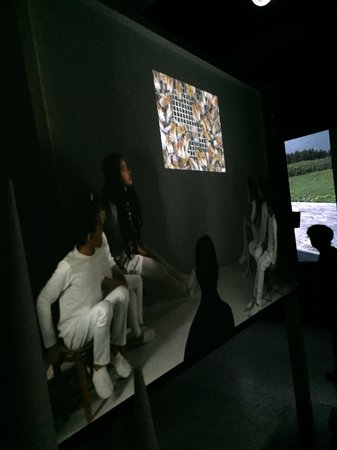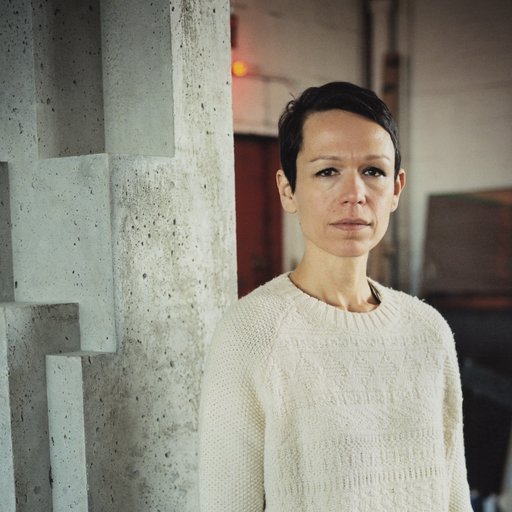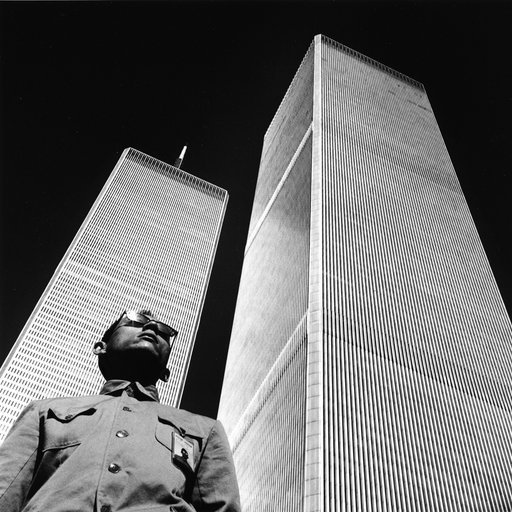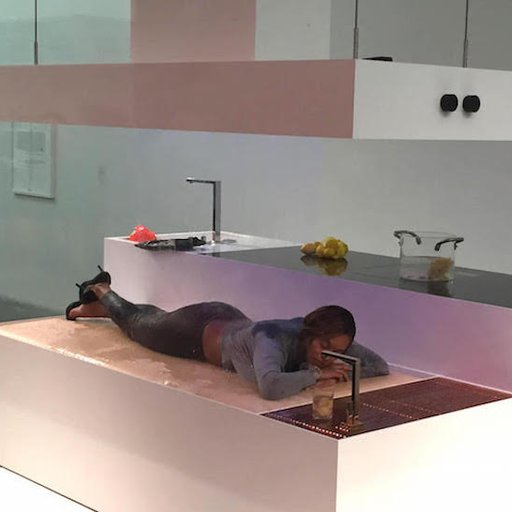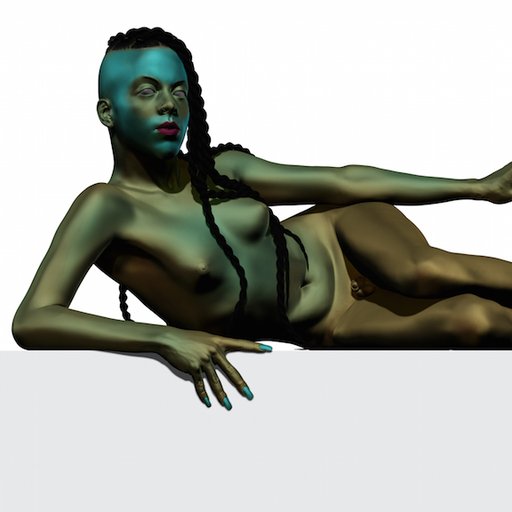A surpassingly spooky "magick" runs through the Venice Biennale’s neoclassical American Pavilion this year, courtesy of the venerated performance and multimedia pioneer Joan Jonas. Now 78 years old, the artist—whose classic works, like Mirror Check (1970) and Vertical Roll (1972), present the body as a staging ground for feminist explorations of self—has largely absented herself from the proceedings, instead filling all four rooms of the pavilion with video projections of children and animals. In a Biennale in which politics and the environment are much examined, Jonas has brought another topic to the fore: transcendence.
Entering the pavilion, the viewer first encounters a video of a group of children in white home-made ceremonial-looking garb walking amid tall white paper cones while a honeycomb pattern is projected over them. At another point in the video, the children watch a projection of bees climbing through a hive; along the walls hang depictions of bees that resemble Japanese ink drawings. Throughout the galleries, a murmur of narratives—ghost stories—can be heard. Many of the videos in the show were derived from workshops that Jonas has been doing with schoolchildren in New York, and from the get-go the ambiance is pedagogical (albeit reminiscent of a Waldorf school housed in a SoHo cold-water flat).
The themes of the rooms progress from bees to fish and then finally to wind—all elements characterized by communion and mutual movement—with the videos of the children becoming increasingly occult. One doesn’t need to know that the installation continues a previous 2010 piece called “Reanimation” (itself inspired by Icelandic novelist Halldór Laxness’s Under the Glacier) to glean that there is a spirit of animism at work in these pieces, at once ancient and speculative. A girl in a mask holds mirrored amulets in the woods; children stage ceremonies in shadows; a girl stands on a rocky crag and performs an invocation of the wind; another girl draws her body on a large sheet of paper she holds over herself.
That sheet is in the show, along with other drawings, artifacts from the performances, limbs of trees that have been tied together, and cases of objects (including one of Jonas’s masks)—all exhibited in the manner of displays in a middle-school science fair. A culminating image finds Jonas herself running her hands through tall grass, playing the natural world like a harp.
Below, see photos from the pavilion.
RELATED LINKS:
Expert Eye: American Pavilion Curator Paul C. Ha on Why Joan Jonas Represents U.S. Art Today
Art Bytes: Watch Venice Biennale Representative Joan Jonas's Groundbreaking Video Artwork
Book Report: Venice Biennale Representative Joan Jonas's Workout Regimen for Artists
